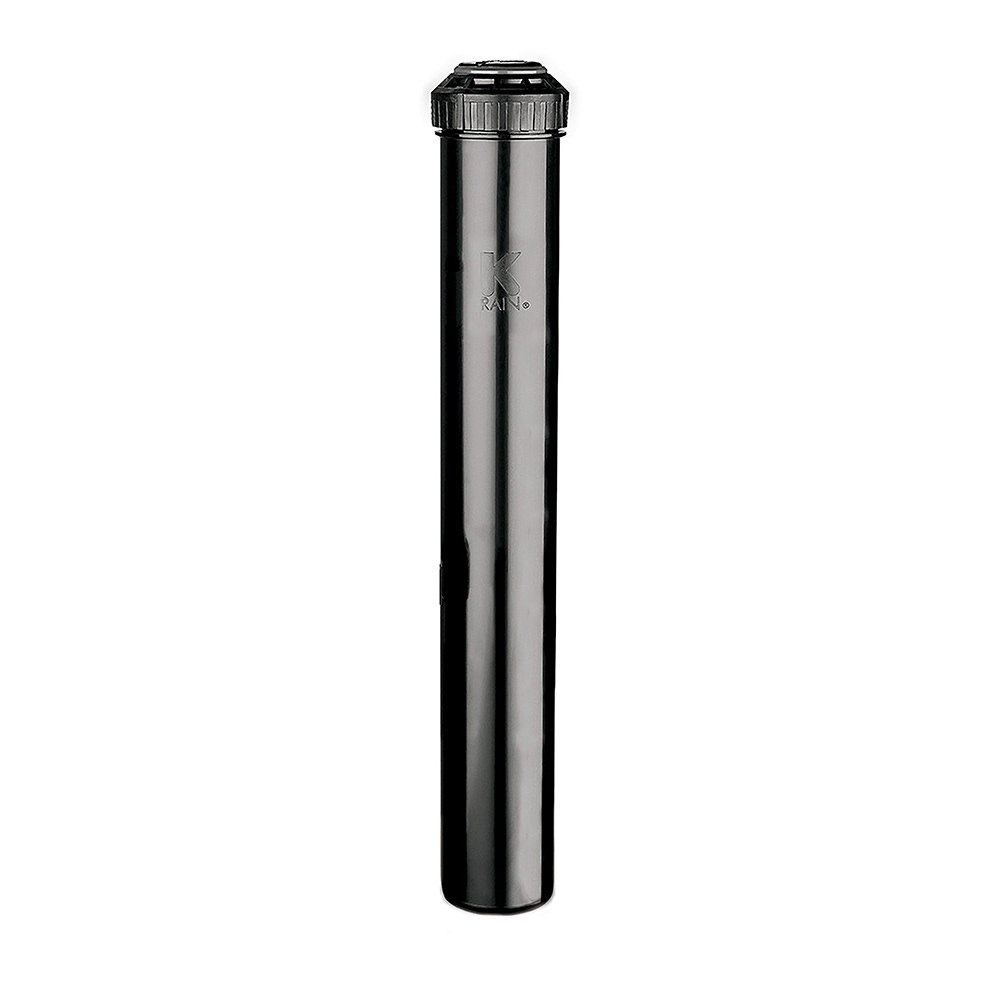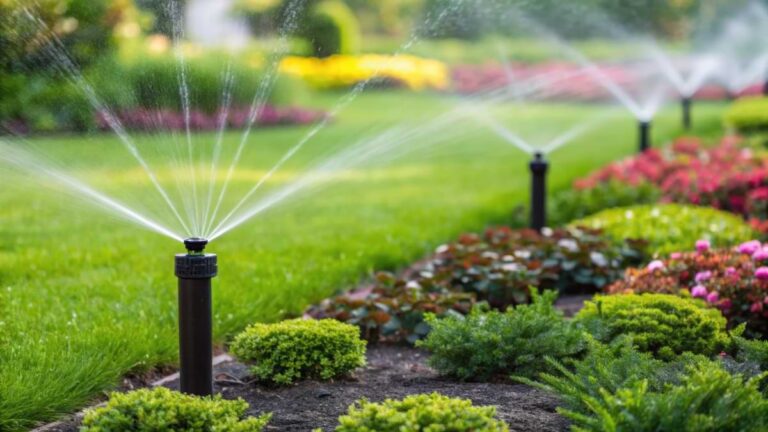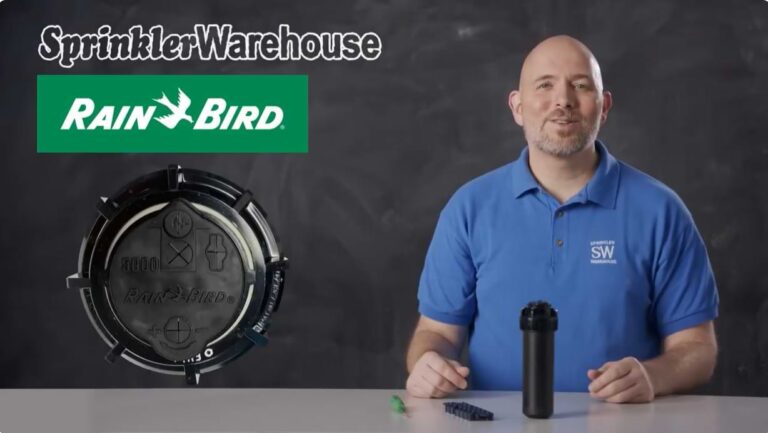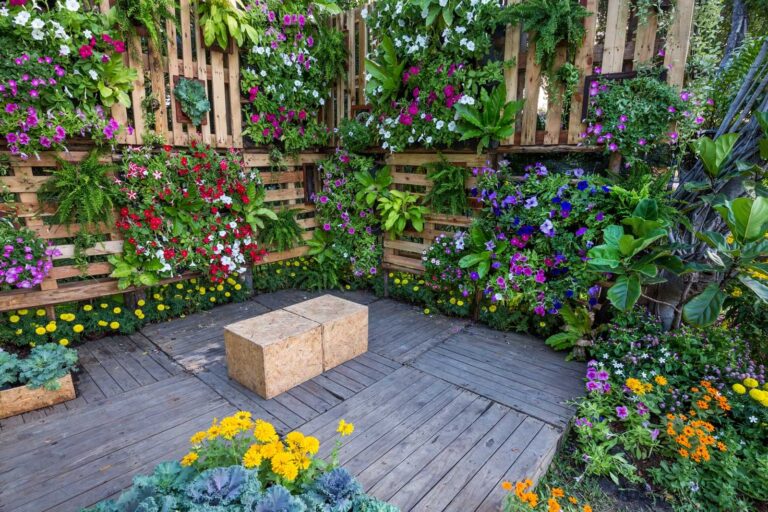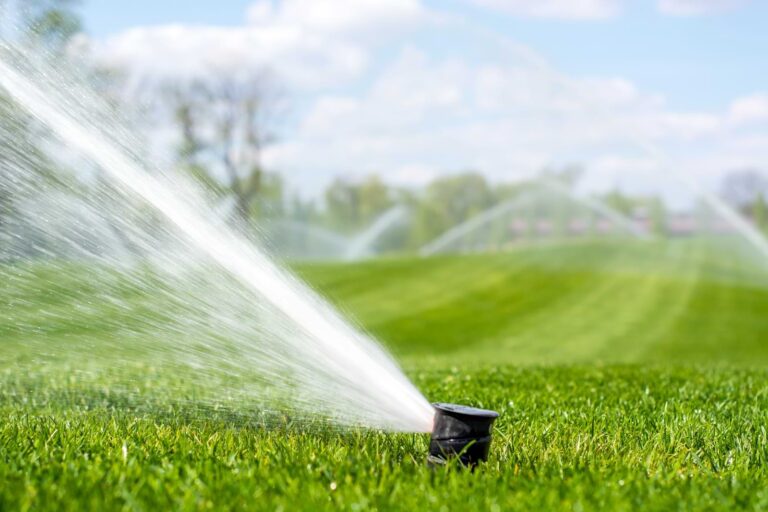Today we’re discussing the Dig Solar Powered Hose End Timer. Because of its solar capabilities, there are no batteries required. Adrian Sanchez here, for the Sprinkler Warehouse. Let’s get started.
Learn The Basics Of A Hose End Timer
At the very top of this hose end connector, you should find a screen washer. Every few months you should pull out the screen washer and clean it out.
If you’ve already got your Dig Solar Powered Hose End Timer and you want to program, along with this video, and you haven’t put it out in the sun for an hour yet. Go ahead and do that now.
Shop All Hose End Timers At SprinklerWarehouse.com
Programming Watering Hours For The DIG Solar Powered Hose End Timer
Okey Dokey, press the “ON” button here underneath the screen. The DIG Solar Powered Hose End Timer Comes with this big screen with easy-to-read numbers. We’ll need to program the current time and date. Over here on the left, punch the big button in the middle, with the target-looking symbol. Now the hour starts blinking. Press the up and down arrow buttons to change the hour. To change AM and PM you have to scroll through the numbers.
Setting Hose End Timer
Once you’ve got the hour done, press the right arrow button to set the minutes. There are up and down arrow buttons to set the current time. Press the right arrow button again and we’ll move on to set the month. This little flashing number, in the bottom left corner, indicates the month. So I’ll push the up button ‘til this little flashing number says 8. Press the right arrow button again to set the day of the month. Then once you’ve got that set, press the RIGHT arrow button again and use the up and down arrows to set the year.
After having arrived at the appropriate year, press the target-shaped button again and you’ll exit the time and date program. The current day of the week should be flashing at the top of the screen. If It’s not the correct day, you’ll want to go back and make sure that you’ve correctly chosen the date.
Choose Your Watering Schedule
Now let’s set which days we want to water. Press the right arrow button once to get to the watering day program. This little symbol at the bottom indicates that you’re in the watering day program. The little triangles or down arrows underneath each day of the week indicate whether that day is set to water or not. No triangle means it’s not watering that day. By default when you start the timer all days are selected to water.
Press the target-shaped button to enter the program. At this time M for Monday should be blinking. To make Monday a watering day press the up arrow button. In this case, Monday is already set. To say “no” to Monday, press the down arrow button. Use the right arrow button to move to the next day of the week.
So I think I’ll set my watering for Tuesdays, Thursdays, and Saturdays. Since the rest of the week is set for on. I’ll press the arrow button to make Wednesday blink. Down arrow to turn off Wednesday, and so on. Once the days are set, press the target-shaped button to confirm your settings and exit the watering day program.
Odd Or Even Watering Days Are Also An Option On The DIG Solar Timer
Another option would be to water even days or odd days. Let’s enter the watering day program by pressing the target button again. Now keep pressing the right arrow button until the word even appears. If you prefer odd days, once you see the word “EVEN” then press the down arrow button so the word “ODD” appears. See right here. Press the target button to confirm your selection. We have one more possibility for our watering days. We can water every so many days anywhere from one to thirty days.
The Solar Irrigation Timer Has An Option To Water Every Nth Day
So If I wanted to water every third day. I’d press the target button to enter the watering day’s program again. I press the right arrow button until a large flashing number appears. Now I’ll press the up or down arrow buttons until I reach the desired number. In this case, “three”. Now press the target button again to confirm. If you want to get back to the days of the week set up again, simply press the target-shaped button so that the number is blinking again. Then press the right or left arrow buttons and you get back to the days of the week settings. Then reset the days of the week just like we did before.
How To Program Irrigation Start Times And Run Times
Let’s talk start times and run times. You can have up to four start times per day. Every day that you have set to water, will have the same start times. And each start time will water for the same amount of time that you set. You cannot, for example, use this device to water at six a.m. on Mondays and eight a.m. on Tuesday. Nor can you set this device to water for twenty minutes at six a.m. and then thirty minutes at seven a.m. So let’s set two start times. One at 6:30 a.m. and one at 7 p.m. for twenty minutes each.
Press the right arrow button. At the bottom of the screen, a clock should appear. If it doesn’t, keep pressing the right arrow button until the clock shows up. Press the target-shaped button to enter the start times program. The first number is blinking. Press the up and down arrow buttons to change it to the desired hour. Now press the right arrow button to get to the minutes. Press the up or down arrow buttons to get to the time you want. I’m going to press and hold the up button to scroll to thirty minutes.
If I only wanted one start time I’d hit the target-shaped button to confirm my choice. But I want an additional start time, so I’ll hit the right arrow button to go to the next start time. Right now it’s set to “OFF”. Hitting the up button will get us to twelve a.m. Continue to hit the up button to advance the hours. If I changed my mind and wanted to turn off the second start time then I just hit the down or up buttons until I see the word “OFF”. The “OFF” setting lies between 11 p.m. and 12 a.m.
So I’m going to scroll to 7 p.m. If I wanted to set a third start time and fourth start time I can get there by pressing the right arrow button. But I’m not going to do that now. So I’ll hit the target-shaped button to confirm my settings. To review my settings the up and down arrows will scroll through my start times. Good. I’ve got a 6:30 a.m. and 7 p.m setting.
Why Would You Want Up To Four Start Times On An Irrigation System?
It’s a good idea to split water times up so that the ground has enough time to soak in the water and avoid runoff. Also during especially hot times, your plants may need to be watered twice daily. You’ll have to make that decision based on your location, plant species, season, and soil type. Now on to the runtime. I’ll set my run time for twenty minutes. Hit the right arrow button. You should see an hourglass at the bottom of the screen. If you see something other than an hourglass, keep pressing the right arrow button until it appears.
Press the target button to enter the runtime program. The hour is flashing. If you scroll up and down you’ll see that you can set the hours for anywhere from zero to five. I’m going to leave it at zero. Press the right arrow button to go to the minutes. Now scroll up until you get the amount of watering time you want. I’ve set it for twenty minutes. So now I’ll hit the target-shaped button to confirm. We have now completed programming the DIG Solar Hose End Timer.
Rain Delay Feature To Avoid Overwatering
Now, this brilliant little thing has a rain delay feature. In case the weatherman is predicting some incoming rain, you can delay your programming for a number of days. Press the right arrow button until you see a raincloud symbol on the bottom of the screen. Press the target-shaped button to enter the program. Press the up or down arrow buttons until you get to the desired number of days. Or scroll all the way down to “OFF” which is, appropriately enough where zero would be if you scroll down. You can set your rain delay for up to ninety-nine days in the future. Once the allotted number of days has passed the irrigation timer program will continue according to schedule.
Manual Start Watering Function To Override The Schedule
This timer also has a manual function. If you want to start the timer immediately just press the right-most button under the screen. You’ll see it has a water droplet symbol next to it. The timer will begin watering for the standard runtime that you have programmed. To stop it manually you can hit the button again. You can also use this button to manually stop a scheduled runtime if the watering has already begun.
Pressing the power button will stop the current schedule indefinitely. Hit the power button again and your schedule will resume. One additional super cool function. You can add a rain sensor to this timer. The rain sensor is not included, however, most “normally closed” sensors will work. To hook a rain sensor to the timer, cut the yellow wire loop in the back of the timer. Expose the wire. Attach the wires from the rain sensor to the timer using waterproof wire nuts. If you’re ordering a rain sensor for your timer, don’t forget the wire and waterproof wire connectors.
So when you install this timer on your drip system it goes inline ahead of your head assembly. I highly recommend picking up a hose “Y” faucet adapter. One with valves on it, so that you don’t lose the use of your hose bib to your drip system. Connect your timer directly to your “Y” adapter and then connect on your head assembly.
And don’t forget to turn the faucet and the valve on your “Y” adapter to the on position.
Remember, Sprinkler Warehouse has everything for your irrigation needs so your trees, lawn, flower beds, and gardens are lush and beautiful. If you have any questions about our products chat with one of our superb customer service agents on SprinklerWarehouse.com. They really know their stuff and they’ll get you squared away. Subscribe to our YouTube channel for helpful tips, tutorials, and general sprinkler instruction. For Sprinkler Warehouse, I’m Adrian Sanchez. Later irrigator.






















